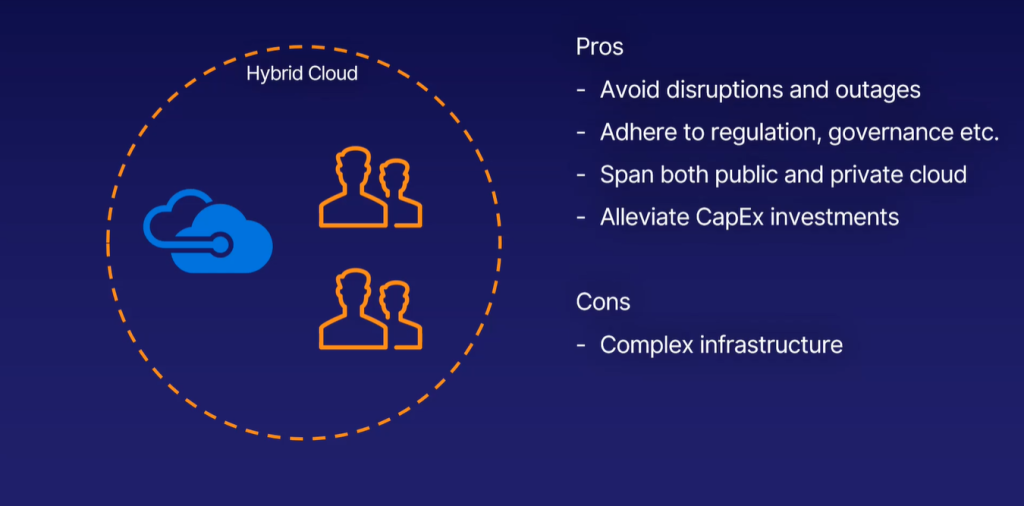
Please note that some screenshots have been taken from Pluralsight’s AZ-900 Microsoft Azure Fundamentals course.
The Language of Cloud Computing
Cloud computing is the on-demand availability of computer system resources split into compute, networking and storage distributed via data centres around the world. Benefits include low cost, ease of adoption and almost unlimited resources.
High Availability
Core to the cloud. It allows you to be able to provision more servers in very little time. You don’t own the hardware. If the hardware fails, you can replace it instantly. Use clusters to ensure high availability.
Reliability (a.k.a. Fault Tolerance/Disaster Recovery)
Resilience
Being able to recover from failures of a system and continue to function.
Deploy in multiple locations
- Global-scale computing
- Protects against regional failure /disaster
No single point of failure
- Resources in multiple locations
- If one goes down, others pick up the load
Scalability
The process of scaling out, up or down automatically to adjust resources to meet demands.
Scale-out adding more resources of the same size to the pool (Horizontal scaling)
Scale up adding more power to the existing machines in the pool (Vertical scaling)
Predictably
Predicable performance
- Consistent experience for customers regardless of traffic
- Autoscaling, load balancing and high availability provide a consistent experience
Predictable cost
- No unexpected surprises
- Track and forecast resource usage in real time
Management
Security
Full control of the security of the your clod e.g. patches, maintenance, network control etc
Governance
Ability or capability to establish standards e.g.. standard environments, regulatory requirements, audit for compliance.
Manageability
Management of the cloud How you manage your different cloud resources e.g. auto-scaling, monitoring, template-based deployments
Management in the cloud Portal, CLI, APIs
The Economy of Cloud Computing
Capital and Operational Expenditure
Capital Expenditure (CapEx) the money spent by a business or organisation on acquiring or maintaining fixed assets e.g. land, buildings etc. Large upfront investments.
Operational Expenditure (OpEx) an ongoing cost for running a product, business, or system on a day-to-day basis. This includes annual costs. Pay as you go model.
Cloud Pricing Models
Hourly pricing e.g. VMs, App Services vs Consumption pricing i.e. pay for resources used,
Cloud Service Models

Infrastructure-as-a-service (IaaS)
- Provides servers, storage and networking as a service.
- Actual servers that you don’t have to go out and buy.
- Scaling is fast
- No ownership of hardware
- e.g. VMs & Servers, Networks, Physical Buildings
Platform-as-a-service (PaaS)
- Superset of IaaS also includes middleware, such as database management tools
- PaaS supports web application lifecycle
- Avoids software licence hell!
Software-as-a-service (SaaS)
- Providing a managed service built on top of PaaS
- Pay an access fee to use
- No maintenance and latest features
Serverless (Extreme PaaS)

- There are real servers but you don’t have to manage them. You just someone else’s to run on
- Azure Functions are the best know serverless service. They can hosted, deployed, run and managed on its own.
- Extreme PaaS
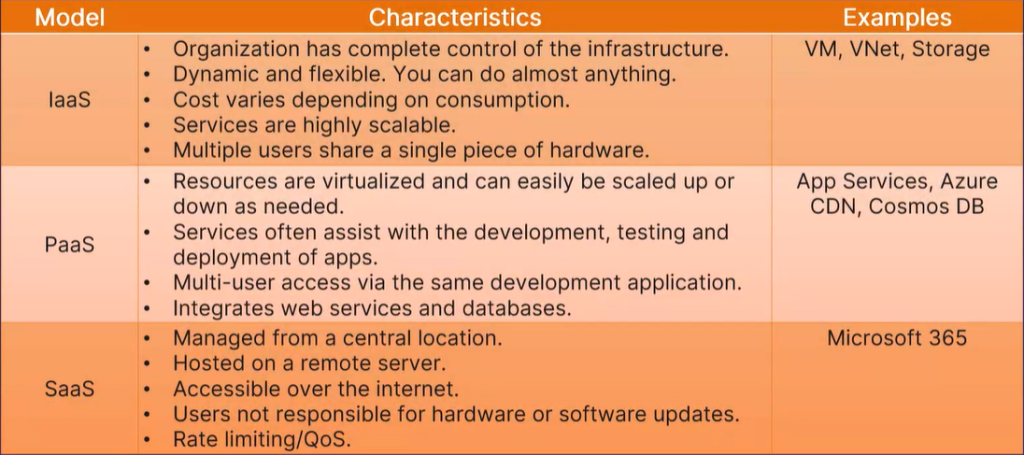
Shared Responsibility
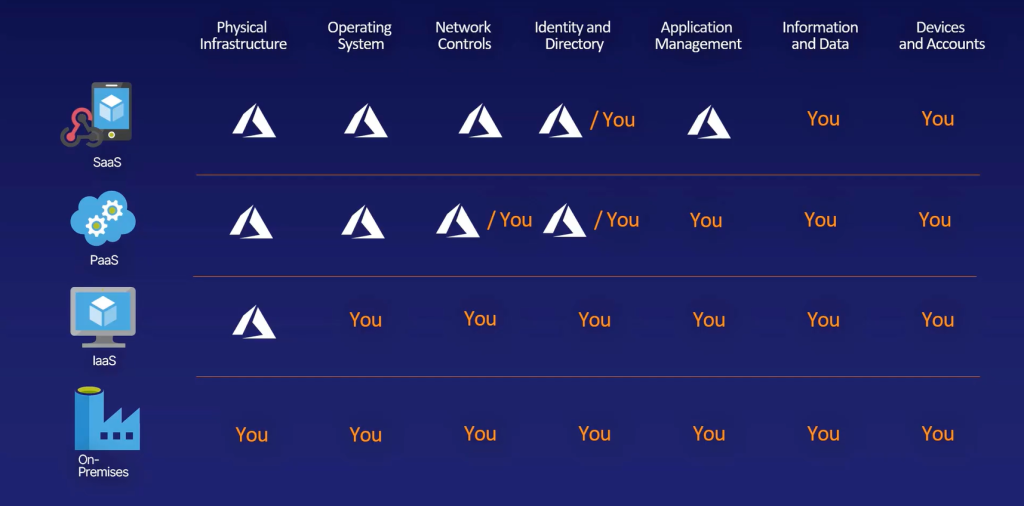
Azure Marketplace
- Solutions and services from MS and their partners e.g. apps, VMs, templates, services etc
- Azure App Store
- Easy to Integrate via the Portal, CLI, or PowerShell. Some are free, some are paid.
- Publish Your Own
Benefits
- Certified and less maintenance
- Effienct
- New Markets
- Support
Cloud Architecture Models
Public Cloud
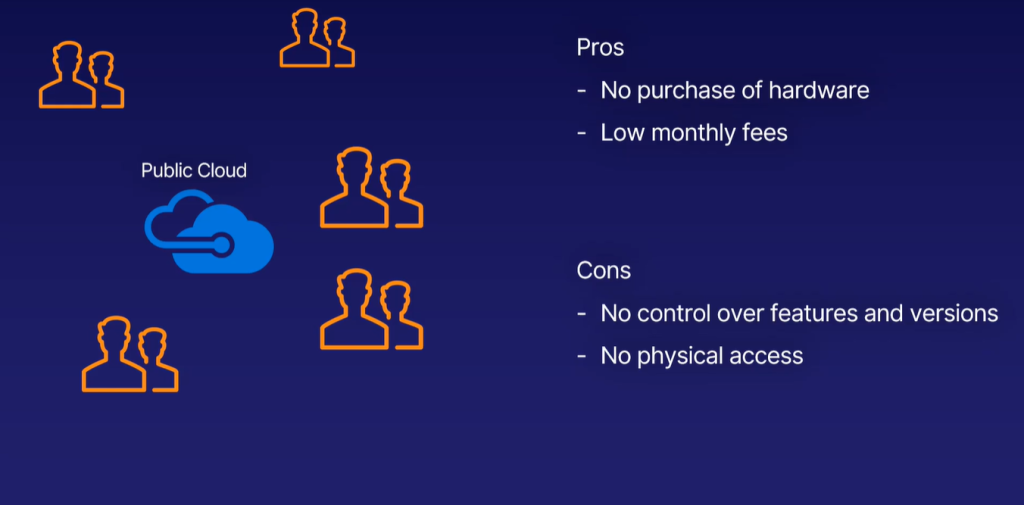
e.g. AWS, Azure, GCP. No upfront costs.
Private Cloud
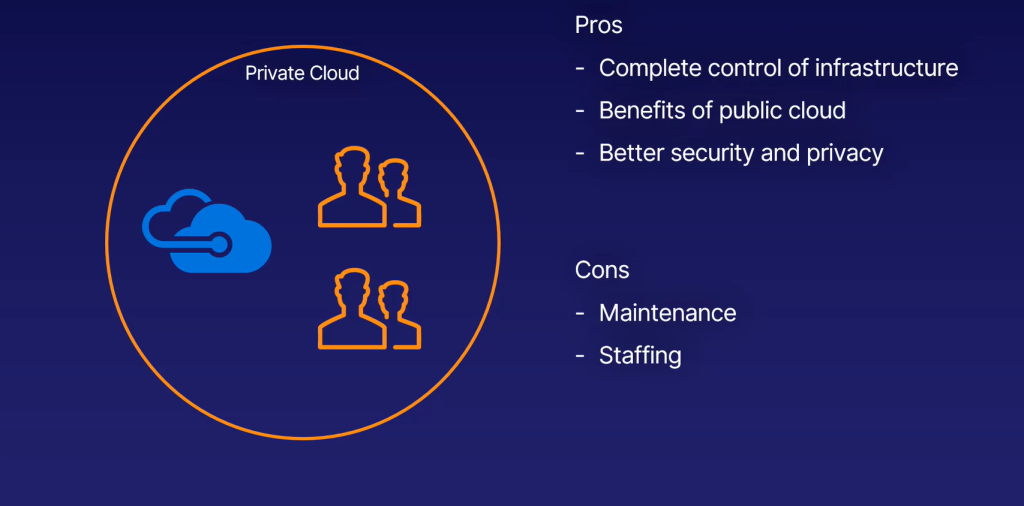
Hosted on your own hardware in a location of your choice
Hybrid Cloud
